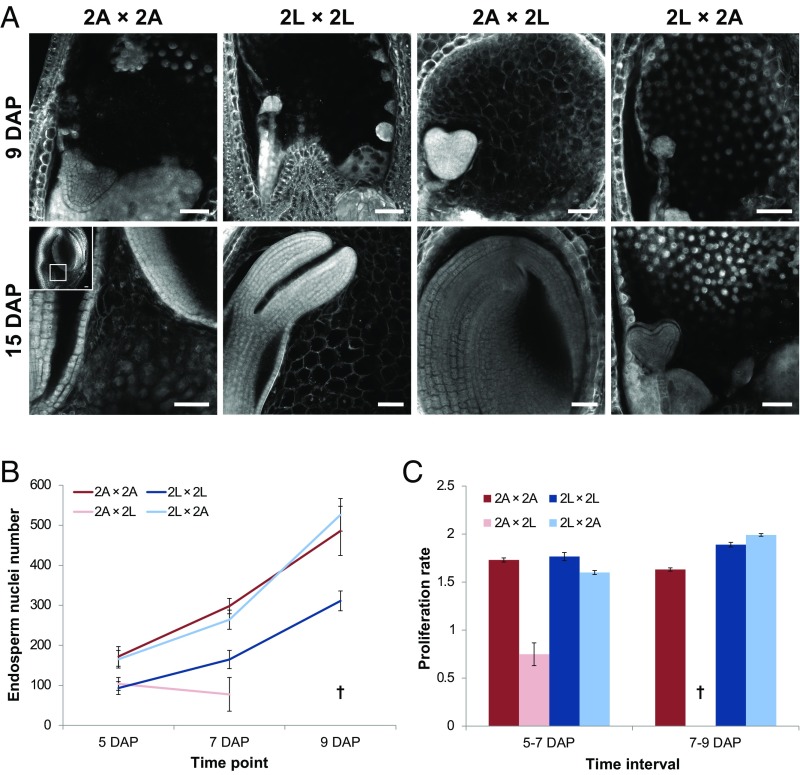Fig. 2.
Impaired viability of diploid A. lyrata × A. arenosa reciprocal hybrid seeds is correlated with asymmetric endosperm cellularization defects, but not with endosperm proliferation. (A) Feulgen-stained seeds of A. lyrata, A. arenosa, and reciprocal hybrids are depicted. Early (9 DAP) and late (15 DAP) time points are displayed. At 15 DAP, A. arenosa seeds (2A × 2A) are very large and mostly occupied by the embryo. For a better display of the remaining endosperm, the larger inlay represents the entire seed and the smaller inlay represents the zoomed-in endosperm region. Images shown in this figure are representative for a total number of observed seeds of at least 20 per biological replicate (three replicates). (Scale bars, 50 µm.) (B) Endosperm proliferation was assessed by measuring endosperm nuclei number at 5, 7, and 9 DAP, represented as absolute endosperm nuclei number. (C) Proliferation rate was calculated as the ratio of nuclei number between 5 and 7 DAP and between 7 and 9 DAP. 2A: 2x A. arenosa; 2L: 2x A. lyrata. Parental species are represented by dark red (A. arenosa) and dark blue (A. lyrata) colors and reciprocal hybrids by light shades (light red and light blue for A. arenosa × A. lyrata and A. lyrata × A. arenosa, respectively). The cross (†) at 9 DAP indicates that endosperm nuclei for A. arenosa × A. lyrata were not detectable. In B, error bars represent SD between three biological replicates (n = 5 seeds per sample). In C, the error bars were calculated as follows: ratio value × [(coefficient of variationtime22)+(coefficient of variationtime12)]/2.

